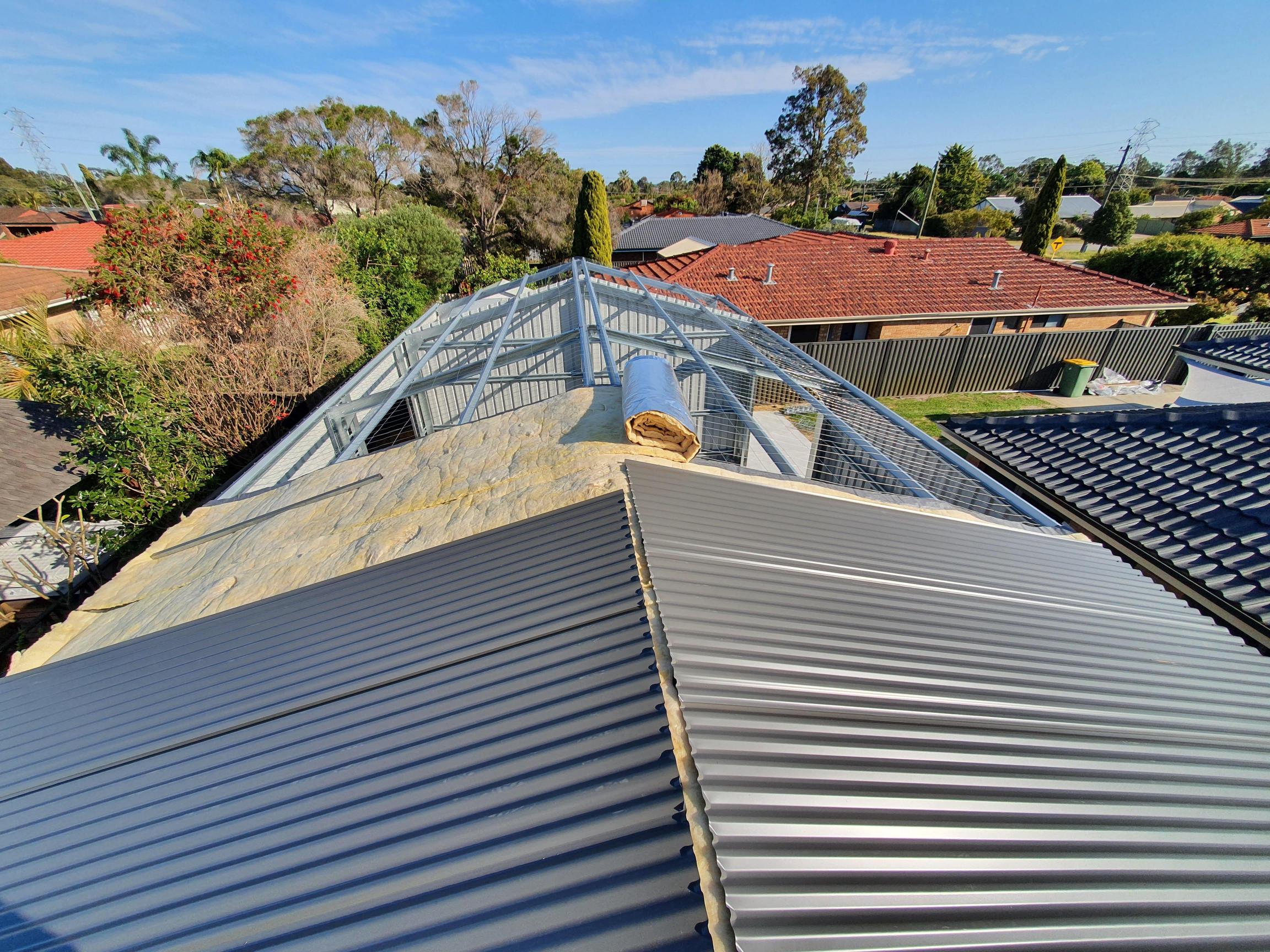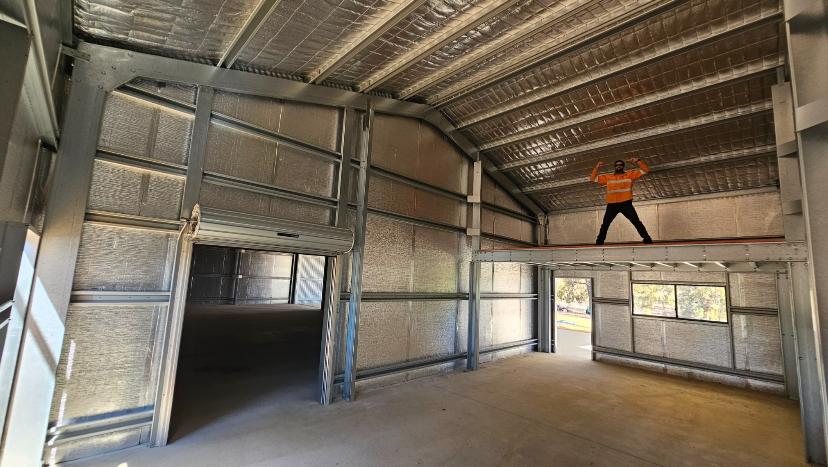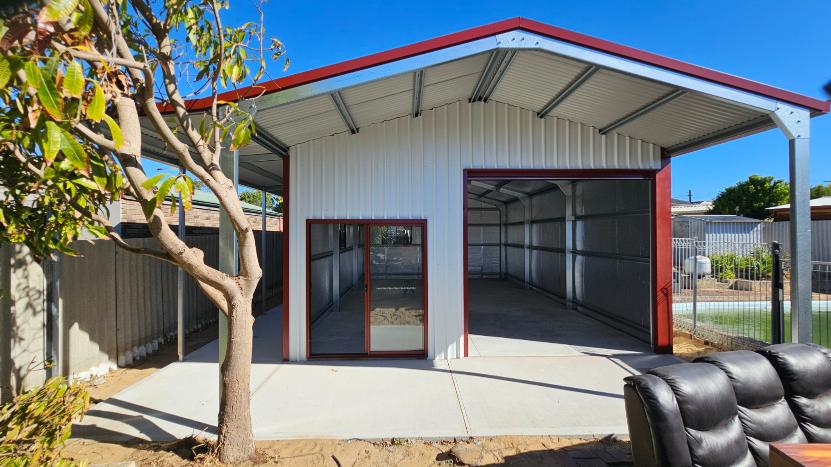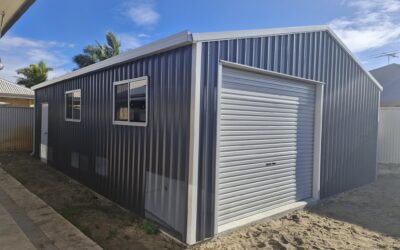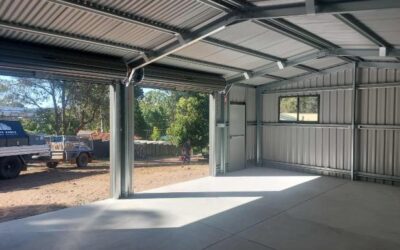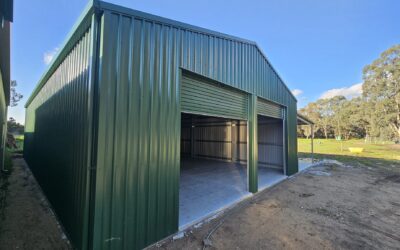How to Keep a Shed Cool in Summer
If you’ve spent a summer working out of a steel shed in the WA heat, you know how fast it can turn into a sweatbox. Whether you’re parking gear, storing feed or knocking out a few jobs in the shade, the last thing you want is to step into an oven every time you open the roller door.
Knowing how to keep a shed cool in summer isn’t about fancy gadgets. It’s about making smart decisions during the planning and building. Get those right, and the heat won’t bother you later. Here’s how we build sheds that still work when it’s sweltering outside.
1. Start With Purpose: Build for How You Use It
Every good shed starts with a clear plan, not just size and colour, but how it’s going to earn its keep.
- Storing machinery? Go for wide bays, good clearance and solid airflow.
- Using it as a workshop? Comfort matters: insulation, lighting, and ventilation are a must.
- Housing feed or livestock? Shade, air movement and moisture control come first.
A shed without purpose wastes space. Nail the function early, and the rest falls into place.
2. Position It Smartly
One of the easiest ways to keep a shed cool in summer is by getting the orientation right before the concrete slab’s even poured.
- Line the shed up to avoid the western sun. That late arvo glare can cook a shed in no time.
- Catch natural breeze by aligning doors and bays with prevailing winds.
- Add passive shade: lean-tos, verandahs or roof overhangs protect your entry points and work areas.
These layout choices don’t cost extra, but they make a real difference.
3. Ventilation: Get Air Moving
Ventilation is one of the simplest, most effective ways to stop your shed from heating up. Get the hot air out and let the cooler air in.
Here’s what works:
- Whirlybirds to suck rising heat from the roof space
- Ridge vents for continuous heat release
- Wall louvres or side vents to bring cooler air in down low
- Powered fans for workshops with limited airflow
Crossflow’s the goal. Let air move freely through the space, and your shed will stay usable, even when it’s pushing 40 outside.
4. Insulation: A Must-Have, Not an Optional Extra
If you’re planning to spend any serious time inside your shed, or you’re storing anything that doesn’t play nice with heat, insulation isn’t a nice-to-have. It’s essential.
At Spinifex, we use proper Aussie solutions that work in real WA conditions:
- Roof Insulation: We offer high-performance products like Aircell Insulshed or Insulbreak, along with Anticon roof blanket. These sit under your roof sheeting and do the heavy lifting when it comes to blocking radiant heat.
- Wall Insulation: For enclosed or air-conditioned spaces, we recommend Aircell products like Insulshed or Insulbreak here too, giving you year-round comfort without cutting corners.
Want to take it a step further? Once your shed’s built, you can line the inside with additional insulation layers. Just make sure your framing is designed to handle future internal cladding—we’ll sort that as part of the design if you’re thinking ahead.
Done properly, a well-insulated shed can drop the internal temps by 10–15°C, turning a scorcher of a day into a shed you can actually work in. No sweat—literally.
5. Reflective Colours and Shade Control
You can block a lot of the heat before it ever gets inside. Material and colour choices matter.
- Go with light-coloured COLORBOND® roofing like Surfmist®, Classic Cream® or Paperbark®
- Add verandahs, roof extensions or awnings to block direct sunlight
- Steeper roof pitches can also help hot air rise and escape naturally
These aren’t just cosmetic decisions. They make your shed more comfortable, more functional and better at protecting what you store inside.
6. Future-Proof the Build
Once the slab’s down, changes get costly. Think ahead while the site’s still bare.
- Go bigger in height or span; it’s easier now than adding it later
- Leave space around the shed for tanks, solar or more bays
- Use a reinforced slab or deeper piers for heavy gear or vehicles
None of these are over-the-top extras. They’re practical calls that save you hassle and cash down the track.
7. Use Quality Aussie Materials
WA’s climate isn’t gentle. You’ve got heat, salt air, strong winds and shifting soils, and your shed needs to take it all.
Use gear that’s built to last:
- Australian-made steel, proven in local conditions
- Genuine COLORBOND® roofing and cladding with decades of performance behind it
- Galvanised framing for coastal or high-use locations
- Certified engineering and fixings that stand up to the elements
This isn’t DIY hardware-store gear. It’s the real stuff, tough, tested and made to go the distance.
8. Why Go With the Pros
All sheds start as a kit, ours included. But the difference is what you get beyond the box.
When you bring in the professionals, you’re not left chasing council, tradies or concrete. You get:
- A shed designed to suit your block, your gear, and how you actually use it
- Proper ventilation and insulation built into the plan—not as an afterthought
- Council approvals, engineering, and paperwork are all handled for you
- A full build from slab to roof, done right the first time
If your shed’s part of how you work, cutting corners doesn’t save you much. Build it once, build it right, and it’ll last for years without the headaches.
Build It Right From Day One with Spinifex Sheds
A shed should do more than just keep the rain off. In Western Australia, it needs to stay cool, practical, and ready to work, whether it’s housing tools, tractors, or just giving you a spot to escape the sun.
If you’re planning to build or upgrade, make sure you’re thinking about how to keep a shed cool in summer right from the start. The early choices are the ones that make the difference later on.
Ready to build a shed that beats the WA heat? Let’s get it sorted. At Spinifex Sheds, we build custom, climate-ready sheds that go the distance, with honest advice, clear communication, and a team that’s with you every step of the way.
Not sure where to start? Jump into our online shed builder to map it out, then give us a call, and we’ll lock in the details and get the job done right.
Similar Articles
Man Shed Ideas: Turn Your Shed Into a Personal Escape
A shed’s never just a box with a door. It’s where you stash the gear, sort your tools, or line up your next project. Whether you’re fixing the ute, catching the footy, or just want a spot to disappear for a bit, the right setup makes all the difference. Even if it’s just for storage, it should still be tough, weatherproof, and built to last.
How to Build a Machinery Farm Shed (Properly)
Machinery is the backbone of any farm. Tractors, headers, sprayers, seeders. These are big investments that keep everything moving. Leaving them out in the weather or under a flimsy shed leads to rust, costly repairs, and downtime when you least need it.
Do You Need Council Approval for a Shed in WA?
If you’re building a shed in WA, whether it’s for tools, a weekend project space, or proper machinery storage, you’ll need to think about more than just the design. One of the first questions you’ll come up against is:

